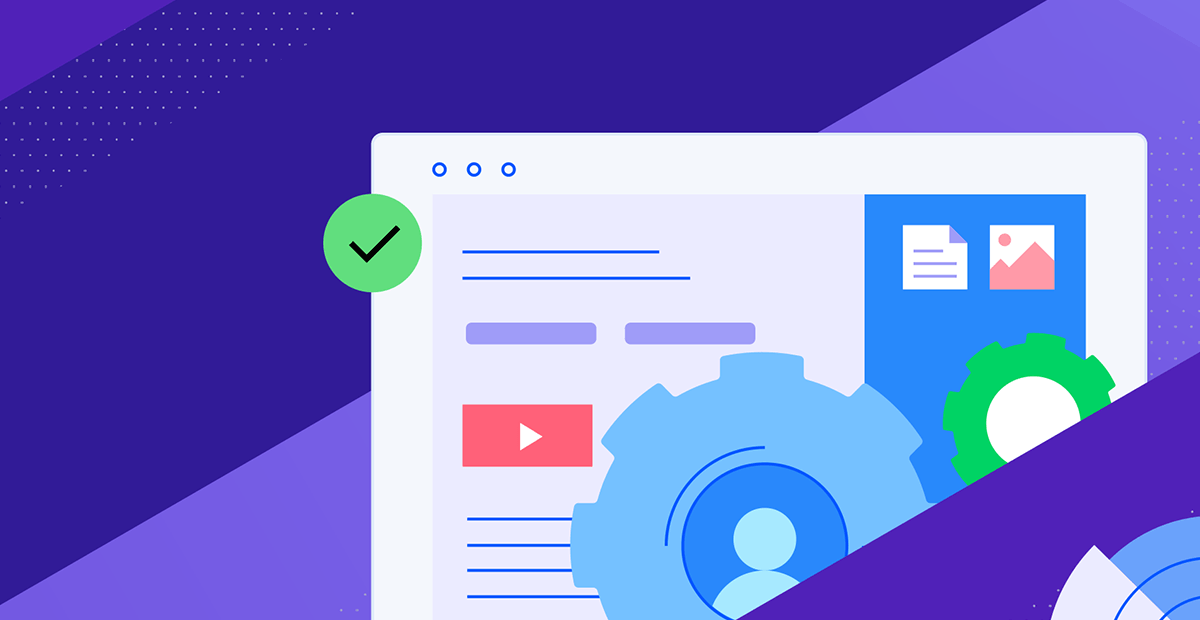Why Now is the Time to Modernize Your Legacy CMS: Threats, Trends and Best Practices

Learn how the digital landscape is changing especially with the introduction of modern headless CMS and why you should modernize your monolithic or legacy CMS.
Have you ever thought of how companies make use of their content management systems (CMS)? Many companies use more than one CMS because they’re looking to minimize delivery risk, expand omnichannel capabilities and support new technology stacks.
Here’s the problem with this—a fractured approach can result in silos and disconnected systems, making it difficult to upgrade and maintain compliance issues. Besides, inefficient workflows make it challenging for you to achieve a seamless user experience across channels.
Fortunately, the digital landscape is changing especially with the introduction of modern (hybrid and/or headless) CMS as against monolithic or legacy CMS. Brands are looking to go past antiquated technologies to adapt modern solutions that keep up with user expectations or evolving business requirements. We’ll explore more of this in this blog post.
What is a Legacy CMS?
Simply put, a CMS is an application that allows users to create, manage and publish content on the web. The term “legacy” refers to “outdated, old, unsupported” and references traditional CMS that may not be suitable for today’s application. Examples of such CMS include popular software such as WordPress and Drupal.
These software have this monolithic structure that contains the frontend and backend in a single application. They also have limited flexibility and rely on templates and plugins for added functionalities.
How is Legacy CMS a Threat to Your Digital Experiences?
Art Shaikh, Founder & CEO of DigitalWill.com, migrated to a headless CMS in the spring of 2022 and he had this to say:
“Legacy CMS is heavy on JavaScript, which slows down the page load time and negatively impacts Core Web Vitals. While CWV isn’t a ‘ranking’ factor for SEO, it impacts the overall customer experience and page experience, which absolutely moves your site down in ranking over time. As a global brand, we needed our site to load fast no matter where our users were, so we invested the time and energy into migrating to a headless CMS away from WordPress.”
Zeeshan Akhtar, Marketing Head at Mailmodo, expressed a similar opinion:
“We made the switch to have better control of the CSS/frontend of our blogs and website collection pages. Legacy CMS’ main disadvantage is its effect on SEO page speed. Due to multiple theme files and CSS being difficult to manage, the page speed is difficult to manipulate.”
Apart from page speed and load time, there are a number of other important features to look at:
Security Vulnerabilities
One major drawback of legacy CMS is its vulnerability to cyberattacks. Attackers can use add-on software like plugins and themes as backdoors to hack the systems.
Shaikh describes headless CMS as a tool not necessary for everyone but recommended for global tech businesses due to security reasons.
“Security is always a concern, so your security infrastructure needs to be built properly prior to making a change from legacy to headless,” Shaikh says. “However, the claims that legacy CMS is somehow safer are largely unfounded. WordPress sites are compromised and hacked regularly. The headless CMS provides the best UX for all users globally by improving the overall speed and presentation of a site, as well as instilling confidence in site users.”
Limited Functionality
As technology advances over time, so do users’ expectations and this often means older systems struggle to keep up with these changes while still offering users what they need out of an online experience today.
Scalability
Once you’ve hit your site’s limit on how many pages it can handle, adding new content to your legacy CMS becomes difficult or impossible without significant investment in hardware upgrades or software licenses.
According to Akhtar, it’s easier and more fruitful to scale headless CMS as you can build all kinds of collection pages and templates using custom development/CSS.
Fragmented Journey and Poor End-User Experience:
A legacy CMS often results in silos and disconnected systems, as it may not be optimized for modern devices or user needs, resulting in a poor end-user experience.
When upgrading to a modern CMS, Shaikh described DigitalWill’s “why”:
“Our major concern was ease of use. We wanted to have the ability to make the changes we needed quickly without having to run to a developer every time we needed to do something simple like editing text on a page. Luckily, we were able to find solutions that helped make the process simpler for us.”
Omnichannel Experiences
A legacy CMS often cannot support the range of channels users expect today, such as mobile devices or social media. With a hybrid headless CMS approach, you can decouple the content from the presentation layer, allowing for greater flexibility in delivering content to different channels.
Lack of Support and Upgrades
One of the biggest threats posed by legacy CMS is the lack of support and upgrades. Many CMS vendors stop supporting older versions of their software, and even deprecate them at a certain point. This means that if you are using an older version of a CMS, you may not receive important security updates, bug fixes, or new features that are available in the latest versions.
Furthermore, migrating to a newer version or a different platform can be a daunting and expensive task. It can involve a complete redesign of your website or application and may require significant investment in time and resources.
This is where a hybrid headless platform can be a game-changer. A hybrid headless platform allows you to keep your existing CMS and infrastructure, while also providing the flexibility to add new front-end experiences and integrations.
Path to Modernizing Your Legacy CMS
There are several paths to modernizing your legacy CMS platform, and the right approach will depend on your organization’s needs and goals.
Gartner provides a three-step evaluation process to help application leaders modernize legacy systems. The first step involves identifying the six main drivers for modernization, three from a business perspective (business fit, business value and agility) and three from an IT perspective (cost, complexity and risk).
The second step is to evaluate modernization options, and Gartner ranks seven options by ease of implementation: Encapsulate, Rehost, Replatform, Refactor, Rearchitect, Rebuild and Replace.
Finally, the third step involves choosing the modernization approach with the highest effect and value, based on the modernization options’ impact on technology, architecture, functionality, cost and risk.
Trends and Best Practices for CMS Modernization
Decoupled, Headless CMS
Decoupling the frontend and backend of your CMS platform allows you to build custom frontend experiences while maintaining the content and data management functionality of your CMS platform. This hybrid approach works for many organizations.
Composability
Composable CMS platforms allow you to build custom digital experiences by selecting and integrating pre-built components and services. A composable CMS architecture decouples the frontend and backend code, enabling the development of independent components that can be combined to create a complete website or application. They offer greater modularity, scalability and resilience compared to monolithic architectures, making it easier to add new functionality without re-architecting the entire system.
Cloud CMS
Moving your CMS platform to the cloud can provide scalability, flexibility and security that traditional CMS platforms cannot offer. Cloud-based CMS platforms can be more cost-effective and provide better performance than on-premise solutions.
Integrations
Integrating your CMS platform with other systems and digital channels can provide a more cohesive and personalized customer experience. Modern CMS platforms often provide built-in integrations with popular marketing automation, ecommerce and CRM platforms.
Technology Back-Bone (.NET Core)
ASP.NET Core is an open-source framework that allows you to build modern, scalable and cloud-ready applications. Using ASP.NET Core as the technology backbone of your CMS platform can provide the flexibility and scalability you need to meet your organization’s digital experience goals.
How to Plan an Initiative to Modernize Your Legacy CMS Setup
The first step to planning an initiative is to recognize the current state of your site and determine your goals and objectives. Is it to improve user experience, page load time and traffic? Or do you want to assess better features and functionalities? The answers to these questions will help you determine the scope of your project.
Next, you want to choose the right modernization path that meets your needs. This could involve selecting and migrating to a new CMS platform, upgrading your existing platform or decoupling your CMS platform. Once you have chosen the modernization path, go ahead to develop a roadmap for the project. This involves defining the project scope, identifying key milestones and timelines, and determining the resources and budget needed to execute the project. With the roadmap in place, you can go ahead to execute the plan and provide subsequent support.
Concluding Thoughts
Modernizing your legacy CMS is an investment to make if you prioritize better digital experiences. By doing so, you can achieve improved security, more efficient workflows, better compliance and a seamless user experience across channels.
Progress Sitefinity Can Help
If you are modernizing your legacy CMS, Progress Sitefinity is an excellent solution. Sitefinity offers a composable Digital Experience Platform (DXP) that empowers omnichannel experiences through a highly scalable, low-complexity and value-driven approach.
Recognized by Gartner® and Omdia Universe, Sitefinity offers a range of features such as a cloud-native enterprise PaaS, headless and multichannel capabilities, experience management tools, and extensibility and integration options.

